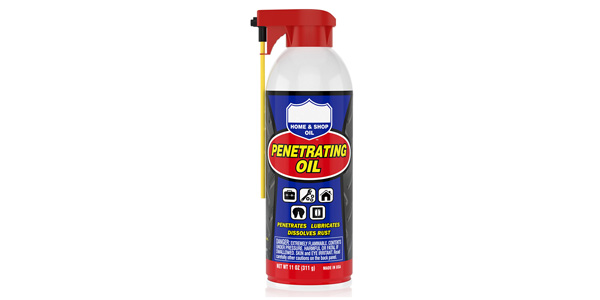
Chevy vs. Ford. Ohio State vs. Michigan. Earnhardt vs. Gordon. These are epic fan rivalries, and also a really good way to find yourself in an argument or maybe even a fistfight, depending on where your loyalties lie. In the aftermarket world, if you want to start this kind of heated discussion, just ask two of your customers: “What’s the best penetrating oil?” Then back away slowly!
Penetrating oils are a very specific type of lubricant, intended for breaking loose rusty, corroded or otherwise “stuck” fasteners or components. These are very light oils, containing petroleum distillates, naphtha or other hydrocarbons, which have capillary or “wicking” properties to creep into small gaps and loosen frozen parts. Penetrating oils leave a residual protective coating to prevent further corrosion from forming, but are not intended for applications in which long-term lubrication is the primary concern. Because of their volatile organic compounds, these fluids tend to evaporate quickly, and the leftover coating is insufficient as a lubricant. They also can harm or stain plastics, so recommend these products carefully.
Aerosol lubricants come in a variety of chemical combinations, each with their own specific uses. These products are intended to apply a longer-lasting lubricant coating to moving parts, reducing friction and wear. They range from light oils to aerosolized greases. White lithium grease, for example, is a thick, heavy-bodied grease that repels moisture and protects against corrosion while lubricating moving parts such as door hinges, latches, seat tracks and cables. Chain lube is meant to not only lubricate high-stress links, but also to resist slinging off from fast-moving motorcycle, ATV or bicycle chains, and to repel dirt and dust that might cling to other types of lubricants and accelerate wear. Application-specific lubricants are widely available for garage doors, industrial applications and even “food-grade” lubricants used for machinery in contact with edibles.
Some aerosols are derived from “dry” lubricants such as silicone, PTFE (Teflon) or graphite. These are light lubricants that leave a non-oily, non-tacky protective residue for applications that need to resist dust and dirt, or where heavier lubricants like grease would “gum up” mechanisms such as lock cylinders.

Graphite lubes often contain water- or alcohol-based fluid carriers, which evaporate quickly and completely to leave only a film of graphite on the moving parts. Silicone-based lubricants are excellent for rubber and glass components (we also use it around here during the winter on our door and trunk weatherstrips to keep them from freezing shut or tearing), but body shops tend to avoid using ANY silicone lubricant because it can ruin a fresh paint job. Silicone residue from aerosols or some detailing products can be transferred to paintable surfaces, causing small craters (known as “fish eyes”) in the finish. In these situations, look for products that are labeled “body shop safe.”
With so many kinds of aerosol lubricants, it’s easy to see why some are better-suited for certain applications than others, and why your customers might have such strong opinions on which ones are the best for a particular task. There’s no single aerosol product that’s the “best” for every sticky situation, but the debate still goes on in stores and shops all across the country.
(And for the record, the “correct” answers above are Ford, OSU and The Man in Black. I’ll be over here in the corner watching the fallout … I brought popcorn!)







